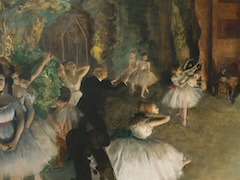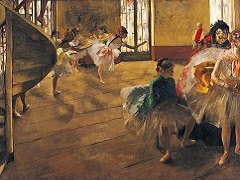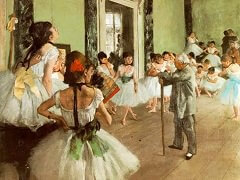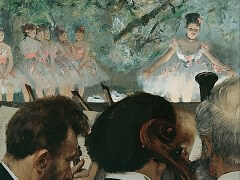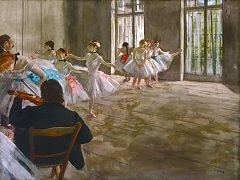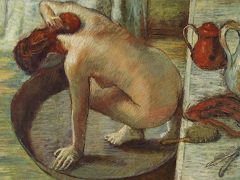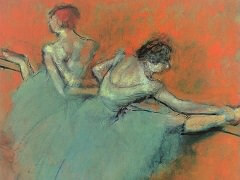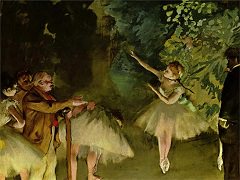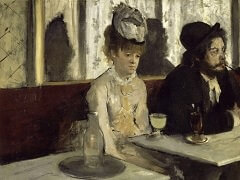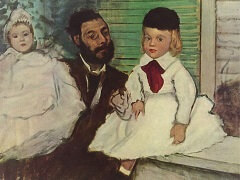The Pink Dancers before the Ballet, 1884 by Edgar Degas
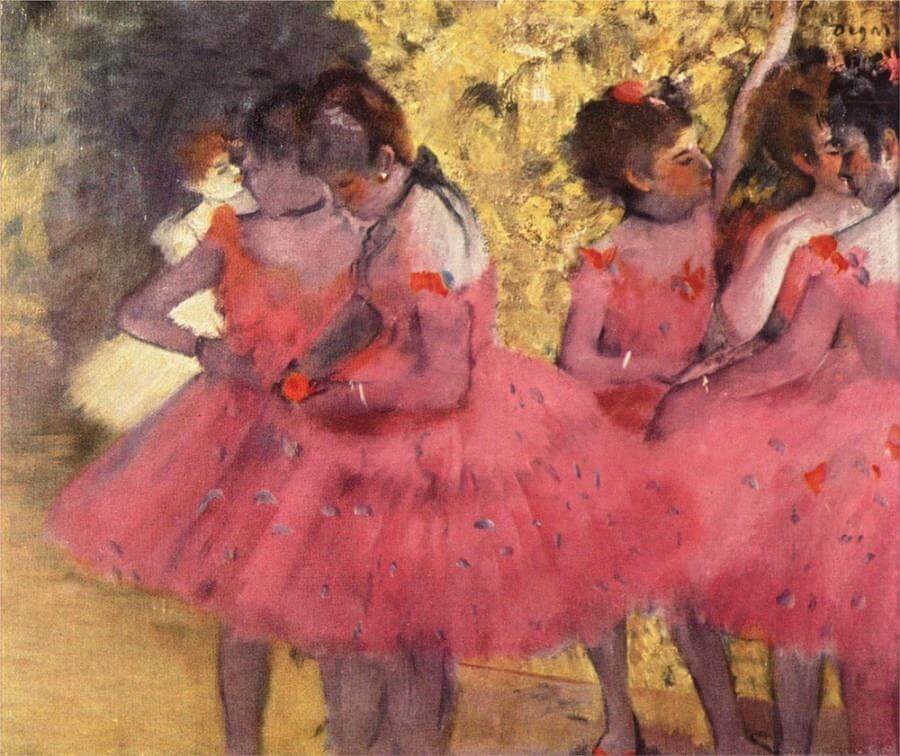
Ballerinas were Degas' favorite subjects (alongside horses). The majority of his paintings depict scenes of ballerinas. But Edgar Degas painted them, like Monet painting Haystacks, at different times and from different perspectives. Performing, rehearsing, dressing, resting - he effectively catalogued the life of a late 19th century ballerina with his exhaustive artwork on the subject. In sketches he would practice drawing the female form in all of the various complex poses into which ballerinas contort themselves during their performances, and he would then use these illustrations to help him in creating his paintings. His finished paintings of ballerinas are quite spectacular.
Painted, like Toulouse-Lautrec's art, with various mediums, including oils, pastels, chalk, and other materials, and contrived, like many of the Impressionist artists, with quick, imprecise brushstrokes to convey the sense of movement and vivacity of the scene, Degas' ballerina paintings appear cloudy and indistinct, no matter the situational subject matter. Whether tying their shoes or performing the great stunt of their show before the audience, these dancers are painted as candidly as possible by the artist. The frequency with which he painted them perhaps reminds us of Claude Monet's thirty canvases devoted to the facade of the Rouen Cathedral and how his art of Impressionism was based on craft. Here, similarly, the artist paints and repaints scenes of a single subject matter to develop a comprehensive image or understanding of something (in this case, ballerinas). Through craft, the artist can perfect his technique, and through technique the artist can craft his art.
The subject matter is almost superfluous to the medium, and yet Degas' preoccupation with ballerinas bears more ties to the Impressionist philosophy of art than might be ascertained at first glance.

